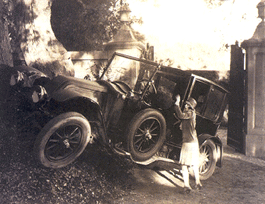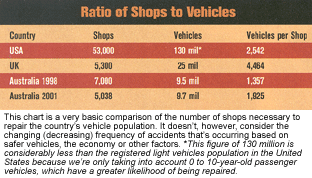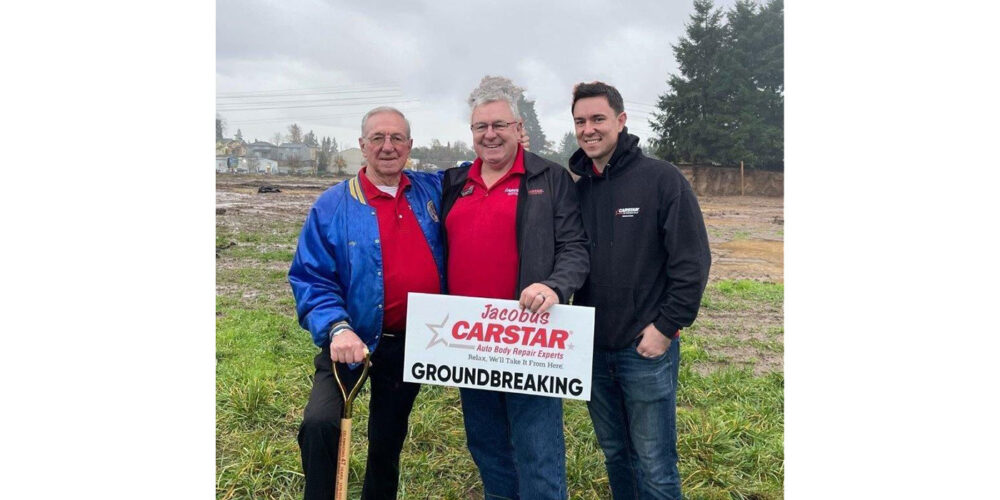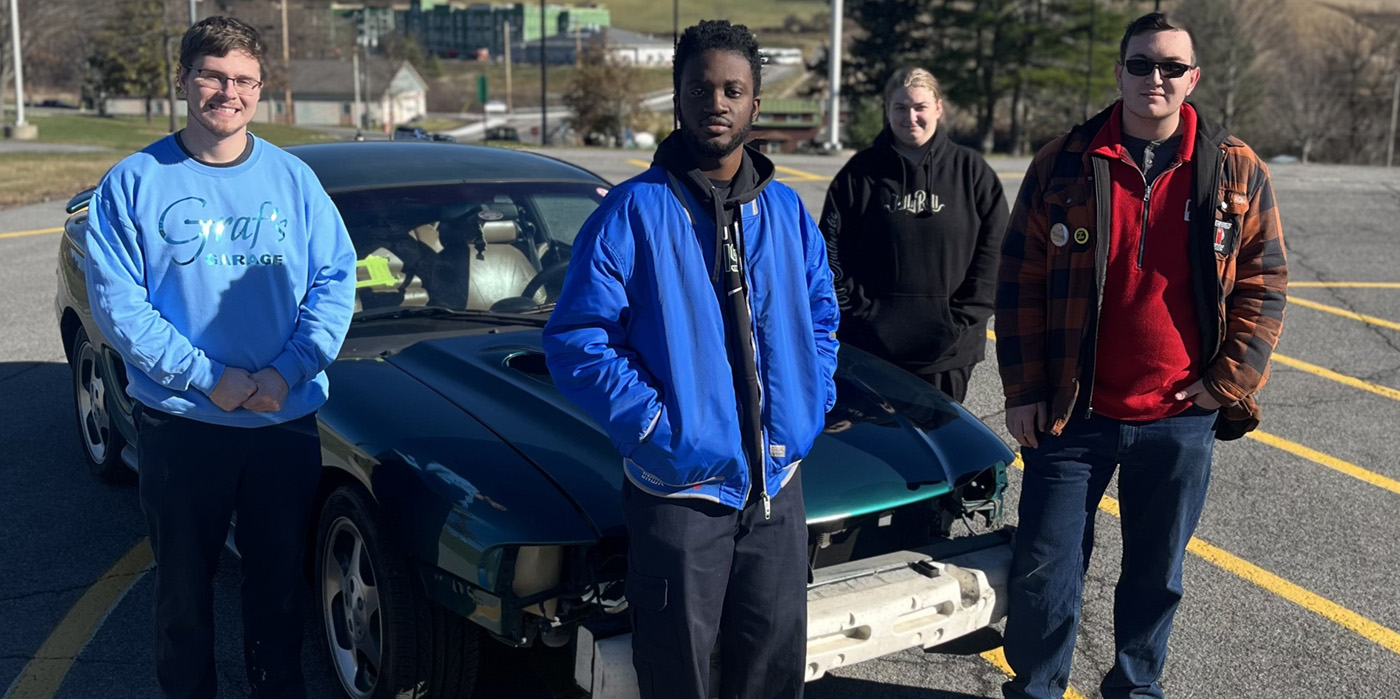
Globally, business is changing – and you’d better be changing your own business with it.
We all know where we’ve been, and most of us know where we are now – but where are we headed?
Every day, you can turn on the TV and watch CNN or another world news channel and hear about the many depressing and potentially harmful events taking place. Even though much of it may be happening 10,000 miles away, it does affect our businesses and industry here at home.
But to take advantage of this information takes the commitment to observe what’s going on and to then determine how it will affect you. Most often, however, the majority of shop owners only focus on what’s happening in their own market (or their own shop) and miss the opportunity to capitalize on the changes taking place from influences outside their local area. In fact, they’re often completely taken by surprise when the rules change. Unfortunately, sometimes the change is so dramatic that it puts them out of business. (Actually, they put themselves out of business by not foreseeing and adapting to the changing business climate.)
From my travels in other countries, I’ve had the opportunity to see a consistency in our industry worldwide that, on the surface, may not be easily recognized. It’s a fact that there’s more
than one way to repair a vehicle. And based on availability of parts, equipment, materials and knowledge, a shop in South America will repair a front fender differently than will a shop in North America, Korea, China or Malaysia. Too often, however, when we see such differences, we assume our industry (in our country) is unique. But it’s not.
We’re all faced with the same set of challenges to run a small business. Though we experience them at different severity levels, our businesses are certainly more similar than different.
With that being said, I’d like to examine three areas that our entire industry is challenged with and how I believe we must prepare ourselves:
- Consolidation.
- Industrialization.
- Human resources.
The Era of Consolidation
The collision industry worldwide is consolidating, while the changes in vehicle designs to make them safer not just in an accident but to avoid one, are increasing. Safer roads and highways with stricter drinking-and-driving laws are also lowering the frequency of accidents. There’s no doubt in my mind (as well as in many others) that this trend of fewer repairs will continue. In fact, it will only continue to pick up momentum and become more noticeable here in North America.
Why? Because with the worldwide economy as it is, people spend less. This includes driving less and certainly becoming more cautious when buying new vehicles and products in general. We can’t get much better than 0 percent financing, can we? In addition, as other industries aren’t able to improve their revenue positions, they, in turn, don’t buy or expand. This also affects us since the people in these other industries buy vehicles, drive them and have accidents; it’s an interlocking circle of dependency.
Statistics (and history) indicate that our industry will continue to consolidate. The United Kingdom has been going through consistent consolidation since the early 1990s. Estimated shop numbers at the beginning of this consolidation range from 11,000 – 15,000. Today, there are only slightly more than 5,000 shops. But the key statistic to focus on is the number of vehicles per shop in the UK today: 4,462.
Australia just entered the consolidation era within the last few years. A major hail storm occurred a few years back, and everyone was “slammed” with work – making it easy for many of them to forget that just prior to that hail storm, shops were beginning to close daily and the work just wasn’t there. Today, however, the work has regressed to typical collision damages, making it more noticeable that there are still too many shops compared to the work available. The hail storm only delayed the inevitable.
According to the shops-to-vehicles ratio, Australia still has a ways to go before its collision market can even be comparable to the U.S. ratio. Having spent some time in Australia last year, I’m convinced that consolidation is far from over there. Shops are going out of business daily.
Repairers in Australia also made one of the most cardinal mistakes of economics as well: They lowered pricing in an attempt to attract more work (work that just wasn’t there). This is a common mistake that we, too, have committed. In Australia, today’s average severity has dropped to levels of 1997, even though parts, materials and all other costs have risen. Yes, there was room with efficiency gains and such, but the industry itself began to drop pricing in an attempt to gain back the volume that it had in the past – not to expand and to capture a higher percentage of the market.
Those who had the ability to double or triple their volume in number of units repaired were successful at maintaining profits. However, most Australian shops are small shops, as here in the United States, with 10 or fewer employees, so to produce massive volumes with the same facility and staffing just isn’t possible. The bottom line was that they attracted no more vehicles than they produced a few years ago, but they repaired them at a lower price. Naturally, profitability was affected.
Though the U.S. market is much bigger and more spread out geographically with population masses compared to Australia and the UK, our vehicles-per-shop ratio indicates that as much as a 43 percent drop in shops is possible when compared to the UK ratio.
I can certainly see the consolidation of the U.S. market continuing – from independents growing larger and opening multiple locations, consolidating groups building and buying shops and then expanding volumes, and dealers growing and building state-of-the-art facilities to “own” their customers. Those of you who aren’t paying attention will soon find yourselves with difficult choices. Many of you already say that work has been down for months now. But could it be that your competitors have gotten bigger and can handle increased volumes? On the other hand, maybe you’ve had the best year ever. Have you grown tremendously this last year? What’s occurring is that those who’ve built a strong relationship with the customer (vehicle owners and insurers) and have the ability to produce more work are growing.
The distribution of shops by volume is already beginning to change. Shops are getting larger to handle more capacity. Smaller shops are finding other revenue sources outside typical, late-model collision repair. Soon, 80 percent of typical collision repair will be done by 20 percent of the shops. Shops doing in a month what the average shop does in a year will become commonplace.
But the pool of repair jobs available isn’t increasing at a rate that can handle the growth that the progressive larger shops are experiencing – so there will be a group of shops that will continue to “starve slowly” as shops around them continue to grow and take market share. This group will be the smaller- to medium-sized shops generally in or around the top 100 metro areas.
I can still remember a small IGA grocery store owner telling me about what happened to him in the 1970s when larger independent and chain supermarkets came in. He said he couldn’t compete and had to close. And today, even what we called large supermarket chains are closing from competition by today’s “Super Stores.” The same thing has taken place in many other industries, and ours will not be exempt.
What can you do? Simply, you must grow if you’re in an area where competition will dictate it. If you happen to be in a small town hundreds of miles away from a metro area, your town’s population is stagnant or declining, and you own the market, you are somewhat safe from the consolidation but you certainly don’t have a bright future – only a steady but slowly declining one.

The Age of Industrialization
I’ve written, spoke and consulted about industrialization of the collision industry worldwide. And as I watch, the industry is beginning to incorporate this concept. Progressive shops are beginning to realize that if we continue to do things as we’ve always done, the results will be the same. To change output requires a change of input.
Toyota Production System Concepts, Theory of Constraints, ISO9000:2000, Kaizen, TQM, Lean Manufacturing and even Six Sigma principles can be applied to our industry equally as well as any other to gain a competitive edge. The time spent studying any or all of these concepts will certainly provide every shop owner a much better picture of where he needs to be and how to get there.
Our industry is just beginning to realize that it needs to maximize throughput. To do this, you must build the facility, employ a staff with the correct mindset and offer the right training. (Even the most progressive shop groups today generally have a very poor commitment to training.)
New shop designs have certainly begun to change the conventional “job shop” processing model. Implementation of quick lanes and/or categorized repairs is beginning to surface in progressive shops worldwide, while the rest of the world is still struggling with the basic fundamentals of “blueprinting” or “staging” each and every vehicle prior to entering production.
New shop designs will certainly increase capacity and make that shop a better business partner to an insurer – and very often, a better selection for the vehicle owner. Yet there are still shops today being designed in a manner that restricts production flow from the beginning, forcing production compromises to begin at the onset. To make matters worse, the administrative processes most shops use are also from the distant past, allowing the inefficiencies to continue.
A number of operators worldwide have recognized these inefficiences and have moved their operations away from these old concepts. They’re also the ones growing and expanding quickly while taking market share from those who still don’t get it.
What can you do? Seek out and learn better methods of operating. Get involved in your paint system’s value-added programs, 20 groups and educational events, and seek personal coaching. Hundreds of ideas for production improvements can be found in The BOSs













